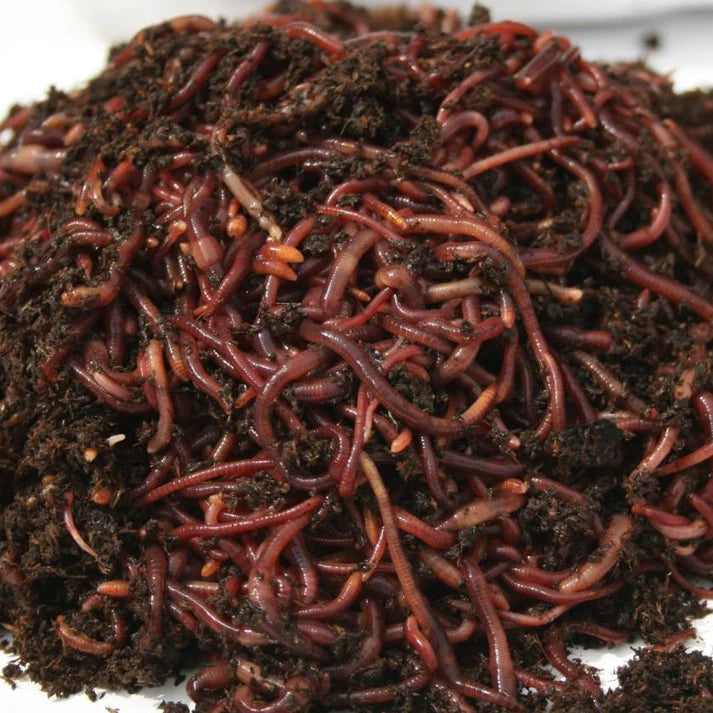Rumored Buzz on Red Wiggler Express
Rumored Buzz on Red Wiggler Express
Blog Article
Red Wiggler Express Fundamentals Explained
Table of ContentsThe Ultimate Guide To Red Wiggler ExpressExcitement About Red Wiggler Express9 Simple Techniques For Red Wiggler ExpressThings about Red Wiggler ExpressThe smart Trick of Red Wiggler Express That Nobody is Talking About
It's risk-free to state this things would have been excellent to include as a to vermicomposting systems! And the prospering Red Worm population? It simply never ever happened. Even in the load that was established up directly in front of backyard composters with existing Red Worm swarms. Yet these nutritionally-boosted timber chip environments are absolutely filled with Lumbricus sp.
Lots of varieties, consisting of Red Wigglers, European Nightcrawlers, and Lumbricus varieties were brought over from the European continent. However here's the thingNative or not - and as gifted as they go to being able to survive in a wide-range of settings and conditions -. In various other words, they are even more likely to hang around in any kind of active composting systems you have established, than they are to roam off and start spoiling the setting.
Roots call for oxygen for respiration and rely on smooth airflow within the dirt to thrive. Nonetheless, when it rainfalls, dirt can come to be saturated with water, reducing the oxygen readily available and hindering vitamins and mineral absorption - Where To Buy Worms. To keep an optimum equilibrium, the dirt needs to enable water to drain pipes effectively, leaving enough space for air to sustain root wellness
The 30-Second Trick For Red Wiggler Express

When it involves worms for composting, what enters your mind? If you were an earthworm dog breeder, dealership, or ordinary garden enthusiast, after that you would certainly know that red wiggler worms are the ideal worms for vermicomposting. To read more concerning these earth marvels, reviewed via several of the red worm facts listed below.
(https://gowwwlist.com/Red-Wiggler-Express_284114.html)Yet if they extend their bodies, you'll be able to see the stripes on their skin. When increasing worms such as red wiggler worms, you must have the ability to know just how to make great usage of them. When you have the ability to maintain and care for their habitat well, and also feed them the ideal type of organic wastes, then they'll be able to produce nutrient-packed and quality-rich worm spreadings for you (additionally called worm poop or compost).
Examine This Report on Red Wiggler Express
So, what do worms consume? Well, these red wriggler worms can be fed with kitchen area scraps and yard wastes. So, any type of decaying natural things will do like vegetable and fruit peels, crushed egg coverings, utilized tea bags, coffee premises, turf clippings, completely dry fallen leaves, and others. Make certain not to feed them foods items that are oily, citrusy, or has meat or dairy in them.

This habits makes them well-suited for life in worm bins, compost heap, and various other constrained spaces where natural waste is bountiful. Producing an ideal environment for red wigglers requires a thoughtful method. Take into consideration the adhering to essential aspects to take care of red wigglers in the house and guarantee their health: Make use of a bed linens of shredded newspaper or cardboard.

Red wiggler worms recreate by laying tiny, lemon-shaped eggs in safety cocoons. These cocoons are typically deposited in the bed linens and hatch into child worms within a couple of weeks.
The Red Wiggler Express Ideas
Their adaptability and resilience have made them a preferred option for vermicomposting in numerous regions around the world. Yes! They can survive from an array of 32F to 90F. They are very adaptable critters. Think about protective actions for very extreme temperature levels such as: Insulating the worm bin with layers of straw or leaves.

Just keep in mind - you can always include even more food later on (but it's difficult to remove feed once it's been included to a bin!).
Since I fed the red wigglers and compost worms as well a lot, they weren't able to keep up and over time the older food went leftover and created anaerobic problems that killed the worms. Below're the 6 golden rules for how typically and how much to feed your worms: Regulation # 1: Moderation!
Red Wiggler Express Fundamentals Explained
Uneaten food will result in anaerobic conditions that will eliminate your real-time worms. It is okay to spray a little of their initial bedding (which needs to currently remain in the bin) over the food, but the food ought to never be buried and ought to be noticeable to your eye. Guideline # 5: See guideline # 1! Guideline # 6: After the very first feeding, feed the worms 1/3 to 1/2 of their weight.
Report this page